Allen Altvater
Main menu
- Home Page
-
Allen C. Altvater
- Allen C. Altvater
- Circle Theater
- Papa's Multigraph
- Family Photo Gallery
- 73rd USN Seabees - WW II
-
Altvater Genealogy
- Altvater Genealogy
- Parents of Allen Sr.
- Grandparents of Allen Sr.
- Kretschman Genealogy
- Warvel Genealogy
- Estes Genealogy
- Price Genealogy
- Moyer Genealogy
- Ingle Genealogy
- Allen C. Altvater, Jr.
- About Being Fired
- My Resume'
- Life Accomplishments
-
Altvater Library
- Sebring Fire Department
- Civilian Conservation Corp
- Highlands Hammock
-
Sebring Air Terminal
- Sebring Air Terminal
- About the Author
- Foreword
- Chapter 1 - The Origin of Hendricks Field
- Chapter 2 - No Army Camp for Sebring
- Chapter 3 - Early History of Hendricks Field
- Chapter 4 - Hendricks Field 1941-1945
- Chapter 5 - Hendricks Field
- Chapter 6 - Hendricks Field After the War
- Chapter 7 - The Eighth Air Depot, Inc.
- Chapter 8 - Ghosts of WW II Planes Still Roar
- Chapter 9 - Congressman J. Hardin Peterson
- Chapter 10 - Historical Documents, Letters, Telegrams, etc.
- Chapter 11 - The Race
- Chapter 12 - The Races
- Chapter 13 - Reports and Memorandums
- Chapter 14 - 12 Hour Grand Prix
- Maps
- Additional Documents
- SAT - After the War
- The Races
- The Fifty Years of Sebring
- The Seventy-Five Years of Sebring
- The One-Hundred Years of Sebring - Excerpts
- Major Thomas B. McGuire, Jr.
- Selected Excerpts
- 1949 Hendricks Field Brochure
-
Allen C. Altvater, III
- Allen C. Altvater, III
- High School Reunions
- Our Church
- HCSO - Sheriff Chaplaincy
- Sebring's Centennial Celebration
- World Changers
- Historical Society
- Sebring Air Terminal
- About the Author
- Foreword
- Chapter 1 - The Origin of Hendricks Field
- Chapter 2 - No Army Camp for Sebring
- Chapter 3 - Early History of Hendricks Field
- Chapter 4 - Hendricks Field 1941-1945
- Chapter 5 - Hendricks Field
- Chapter 6 - Hendricks Field After the War
- Chapter 7 - The Eighth Air Depot, Inc.
- Chapter 8 - Ghosts of WW II Planes Still Roar
- Chapter 9 - Congressman J. Hardin Peterson
- Chapter 10 - Historical Documents, Letters, Telegrams, etc.
- Chapter 11 - The Race
- Chapter 12 - The Races
- Chapter 13 - Reports and Memorandums
- Chapter 14 - 12 Hour Grand Prix
- Maps
- Additional Documents
Chapter 3 - Early History of Hendricks Field
EARLY HISTORY OF HENDRICKS FIELD
(Written by Hayden Williams in 1945)
Up to V-
Those headlines tell the story of the partial fulfillment of Hendricks Field of Sebring. Complete fulfillment of that mission will be accomplished when the Japs, like the Nazis who surrendered unconditionally, are crushed through the aid of the Army Air Forces in which are, and will be, thousands of Hendricks-
At the controls of the Flying Fortresses that constantly bombed Hitler and his hoodlum gang into submission were the cream of American manhood who were trained to fly the four-
And at the controls of the Super-
It’s a far cry from Berlin and Tokyo to June 13, 1941, when what was destined to become Hendricks Field was just a huge prairie tract about seven miles southeast of Sebring. On that day, the War Department announced that the tract -
Now Colonel Leonard H. Rodieck of the Technical Training Command was the project officer. Subsequently, when he became the field’s first commanding officer, he announced that training would begin in November, when the skies hereabouts would be filled with basic trainers.
That announcement was based on the War Department’s plans. But plans are made to be changed, and those in this case were no exception. November came and went, but the skies were conspicuous by the absence of the promised basic trainers. And with November came now Brig. General Carl B. McDaniel, one of the Air Force’s leading authorities on Flying Fortresses, and the departure of the future Colonel Rodieck for Washington and the Chief of Staff’s office.
At the close of 1941, the initial construction program was completed and the contractors were preparing to move their equipment elsewhere when an order came to expand the building program. Then it was revealed that the yet unnamed field would not be used for basic training. It was to become the first Combat Crew Training School in the United States, and instead of Basic Trainers flying around the broad prairie the B-
The thought of Flying Fortresses over this section thrilled the populace in this “hills and lakes section” of Florida. The very thought of the huge war birds filled the people with awe. But these heavy bombers, flying singly or in formation, are now commonplace. But they command attention: even though they have become a common sight daily -
Mid-
At 2355 (11:55 p.m.), January 29, 1942, the first Flying Fortress landed at Hendricks Field. At its controls was the future General McDaniel, who is now on a combat tour in the Pacific theater after a 20 month tour as Commanding General of the 76th Flying Training Wing. At that time the CCTS consisted of one qualified B-
March 1942, saw the beginning of the program which would train and coordinate combat crews; Pilot, Copilot, Navigator, Bombardier, Aerial Engineer, Radio Operator, and Gunners. With the arrival of additional B-
That program continued until the latter part of 1942, during which hundreds of combat crews were trained and dispatched to the European and North African Theatres of Operations, where they distinguished themselves in raids on enemy shipping, airfields and other ground installations.
Then came another change in the mission of Hendricks Field. It was to be a specialized school for four-
The change promptly went into effect and since late in 1942 only first pilots of Flying Fortresses have been trained at Hendricks Field. Thousands of them have been graduated since that time and more are reporting monthly “for transition.” Like the combat crews of the early days, the large numbers of first pilots who followed them have also distinguished themselves at other schools to handle the controls of the Super-
Col. Audrin R. Walker, the first Director of Training and Operations, subsequently became Commanding Officer of Lockbourne (Ohio) Army Air Base. Lt. Col. Gaillard R. Peck, the third Director, is now on the staff of the 76th Flying Training Wing, Smyrna, Tennessee. Lt. Col. James A. Evans, Jr., the fourth Director, is now assigned to the B-
Col. Warren H. Higgins, the third Commanding Officer of Hendricks Field, is also currently assigned to the B-
Ideal weather conditions in this section enable Hendricks Field to regularly keep ahead of schedule. It is known that only one day’s flying time for students has been lost in nearly four years of operation. And because it stays ahead of schedule, overloads from other stations, or special students are sent to Hendricks Field for training. But despite the increase in number of students, both the regular and special classes complete their training on or ahead of time, so thorough is the school’s program and so proficient is its Department of Training which is considered one of the finest in the AAF.
Among the special students trained at Hendricks Field are a general, the sons of many generals and other high-
The flying safety record of Hendricks Field is an amazing one and ranks among the best in the AAF, and for which its personnel has every reason to be proud.
The success of Hendricks Field is attributed to the cooperation that has existed since training began in March 1942, among the members of the crews of the Flying Fortresses, the ground crew, the maintenance men, the civilian mechanics and those “back of the line.” Cooperation is the cardinal principle of Hendricks Field.
Hendricks Field has and is contributing its full share to the prosecution of the second world conflict. It is hoped that it will be a contributing factor to the keeping of the peace that follows.
AUGUST NINETEEN FORTY FIVE
This article was originally published for the Sebring Historical Society
in Bulletin No. 15, October 1973, as well as in a collection
entitled, Olio, January 1979 by A. C. Altvater.
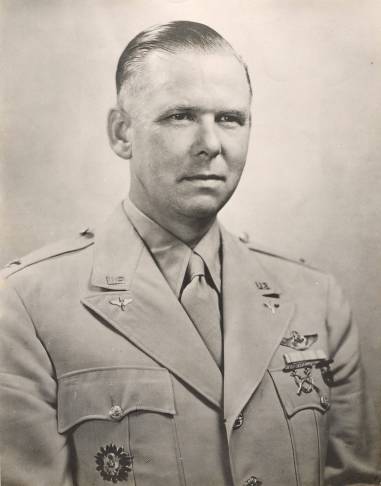
Col. Leonard H. Rodieck
Project Officer who designed Hendricks Field, supervised its construction and became its first Commanding Officer.
Arrived in Sebring 6/17/1941.
Served as Commanding Officer: 6/26/41 – 12/1/41
Col. Leonard H. Rodieck
Col. Charles D. Farr
The fourth and final Commanding Officer of Hendricks Field, and a combat veteran of World War II who wears the golden wings of the Navy and the silver wings of the Air Corps.
Served as Commanding Officer: 6/7/45 – 2/10/46
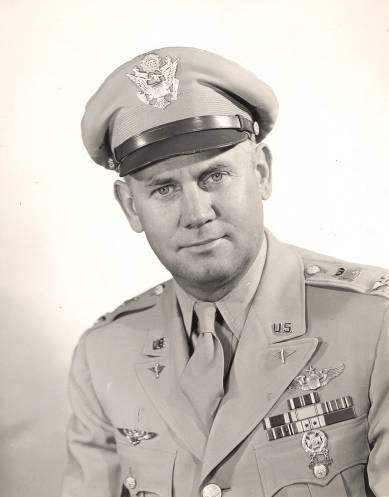
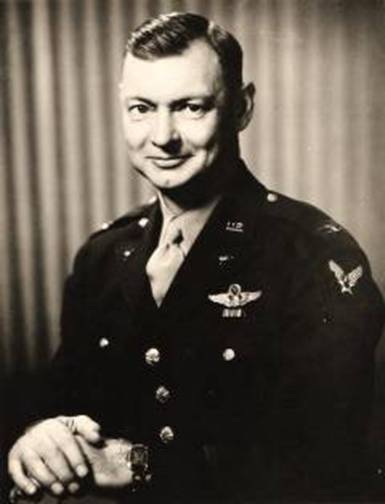
Col. Charles D. Farr
Col. Warren H. Higgins
Third Commanding Officer of Hendricks Field, during whose tour the field’s high standards were maintained, and many improvements added for the comfort and entertainment of the personnel.
Served as Commanding Officer: 10/26/43 – 6/7/45
Col. Warren H. Higgins
Brig. General Carl B. McDaniel
Second Commanding Officer of Hendricks Field, under whom the Flying Fortress pilot training program and flying safety record were started.
Served as Commanding Officer: 12/1/41 – 9/26/43
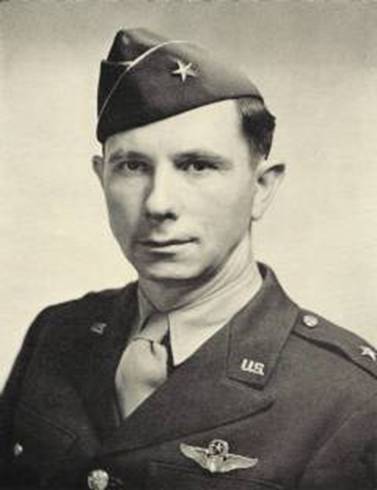
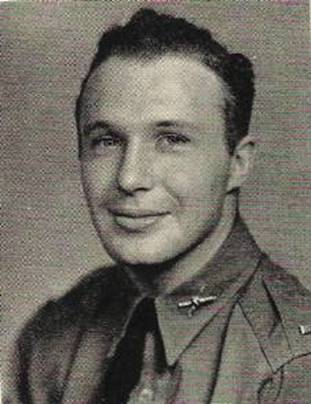
Brig. General Carl B. McDaniel
Lt. Laird Woodruff Hendricks
6/3/1916 – 7/28/1941
First Lieutenant Laird Woodruff Hendricks
A native of Ocala, Florida and resident of Jacksonville, Florida. Entered the United States Military Academy at West Point and graduated in 1939. While on temporary duty with the Air Corps, died in London, England, in July, 1941.
In mid-
Lt. Hendricks was laid to rest in Arlington National Cemetery.
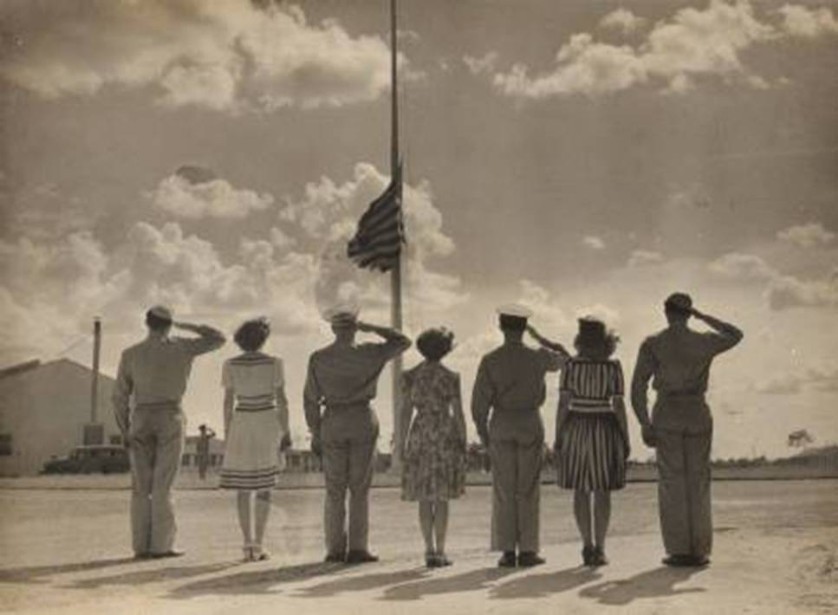
Retiring the flag, ca. 1942. Photo courtesy of the Sebring Historical Society.